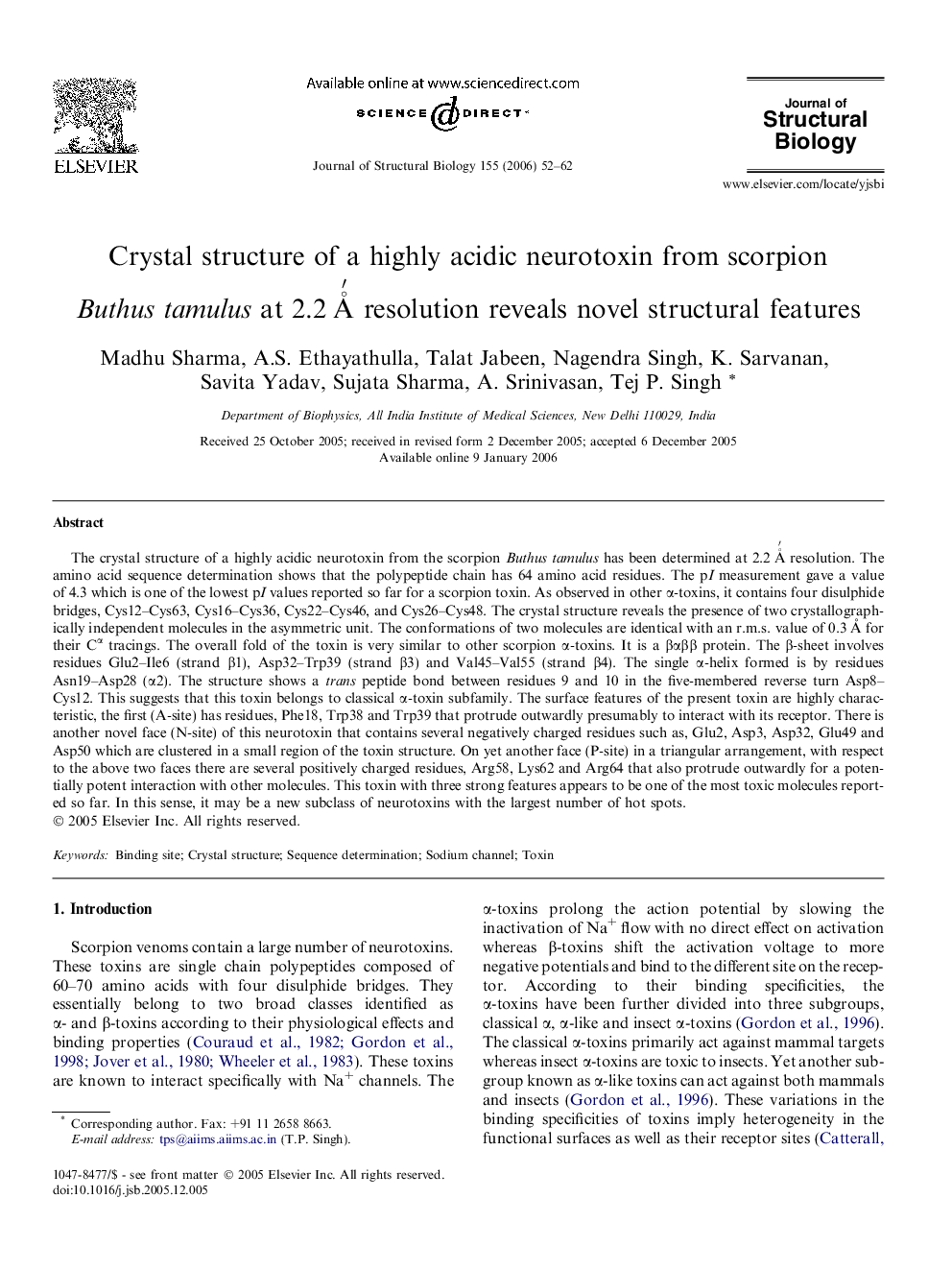| Article ID | Journal | Published Year | Pages | File Type |
|---|---|---|---|---|
| 2829415 | Journal of Structural Biology | 2006 | 11 Pages |
The crystal structure of a highly acidic neurotoxin from the scorpion Buthus tamulus has been determined at 2.2 Ǻ resolution. The amino acid sequence determination shows that the polypeptide chain has 64 amino acid residues. The pI measurement gave a value of 4.3 which is one of the lowest pI values reported so far for a scorpion toxin. As observed in other α-toxins, it contains four disulphide bridges, Cys12–Cys63, Cys16–Cys36, Cys22–Cys46, and Cys26–Cys48. The crystal structure reveals the presence of two crystallographically independent molecules in the asymmetric unit. The conformations of two molecules are identical with an r.m.s. value of 0.3 Å for their Cα tracings. The overall fold of the toxin is very similar to other scorpion α-toxins. It is a βαββ protein. The β-sheet involves residues Glu2–Ile6 (strand β1), Asp32–Trp39 (strand β3) and Val45–Val55 (strand β4). The single α-helix formed is by residues Asn19–Asp28 (α2). The structure shows a trans peptide bond between residues 9 and 10 in the five-membered reverse turn Asp8–Cys12. This suggests that this toxin belongs to classical α-toxin subfamily. The surface features of the present toxin are highly characteristic, the first (A-site) has residues, Phe18, Trp38 and Trp39 that protrude outwardly presumably to interact with its receptor. There is another novel face (N-site) of this neurotoxin that contains several negatively charged residues such as, Glu2, Asp3, Asp32, Glu49 and Asp50 which are clustered in a small region of the toxin structure. On yet another face (P-site) in a triangular arrangement, with respect to the above two faces there are several positively charged residues, Arg58, Lys62 and Arg64 that also protrude outwardly for a potentially potent interaction with other molecules. This toxin with three strong features appears to be one of the most toxic molecules reported so far. In this sense, it may be a new subclass of neurotoxins with the largest number of hot spots.
